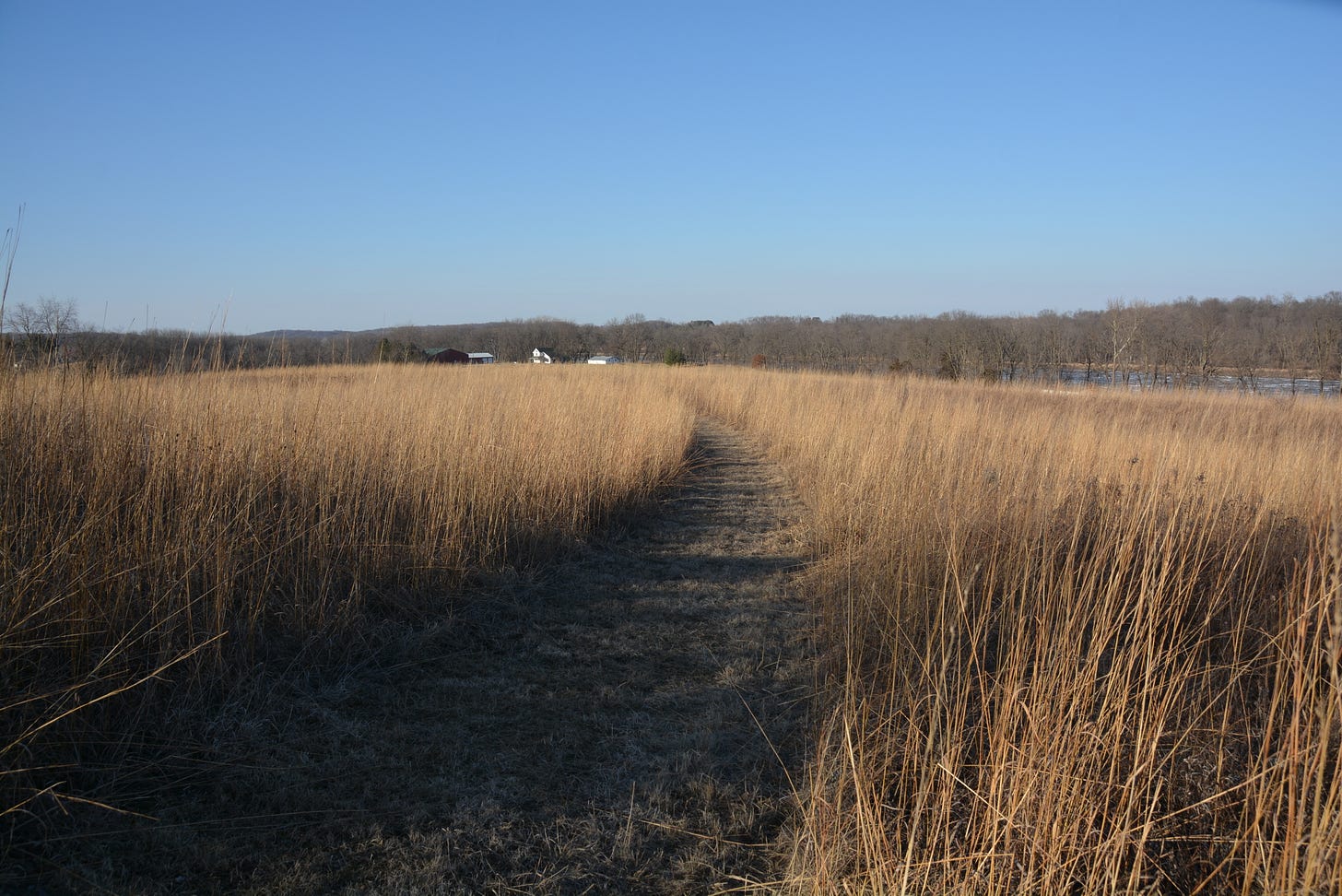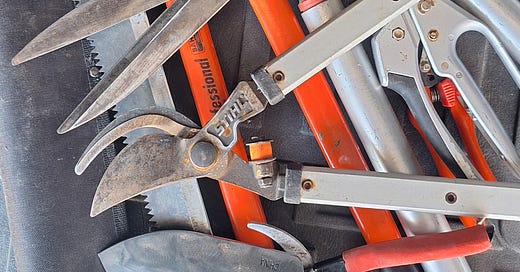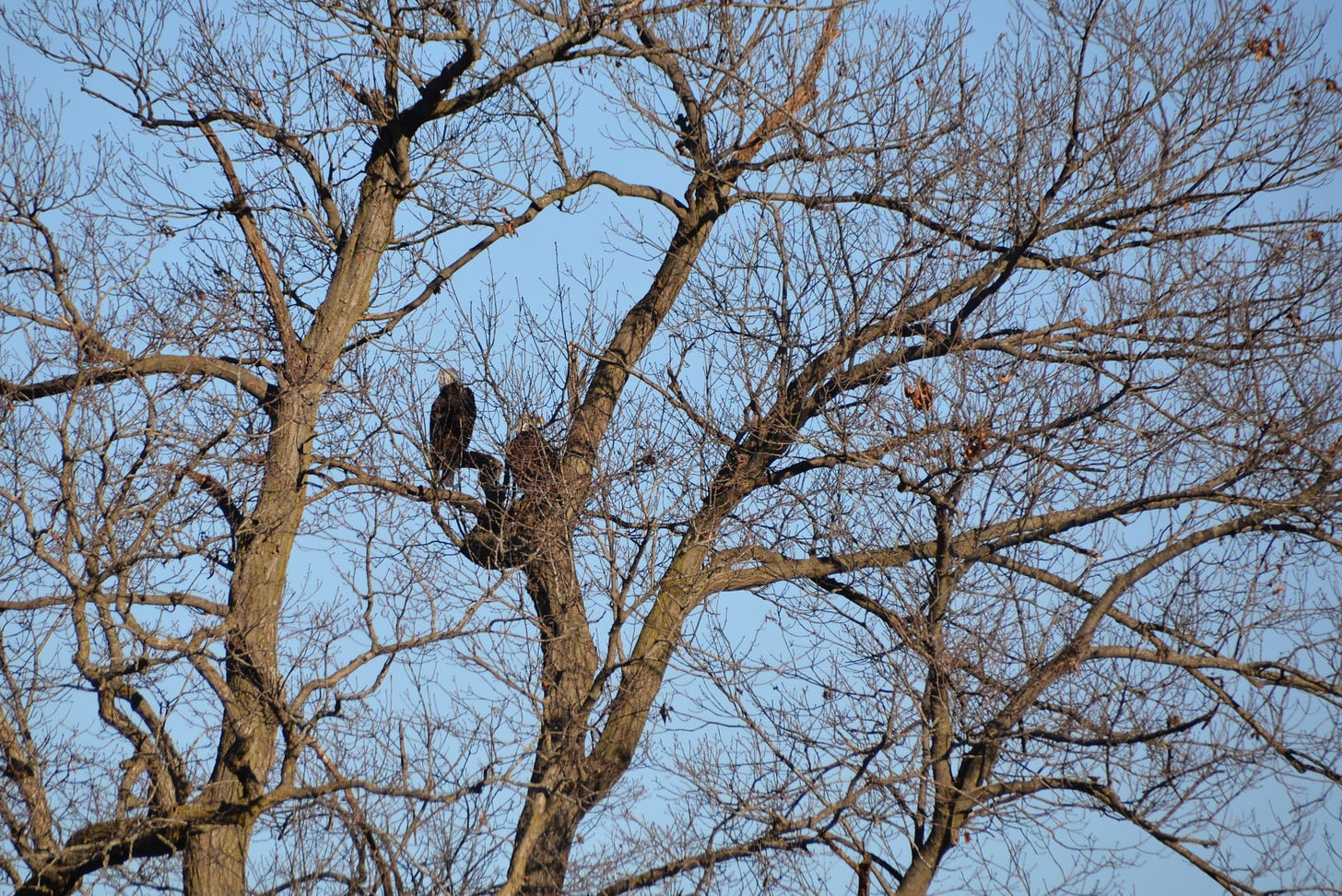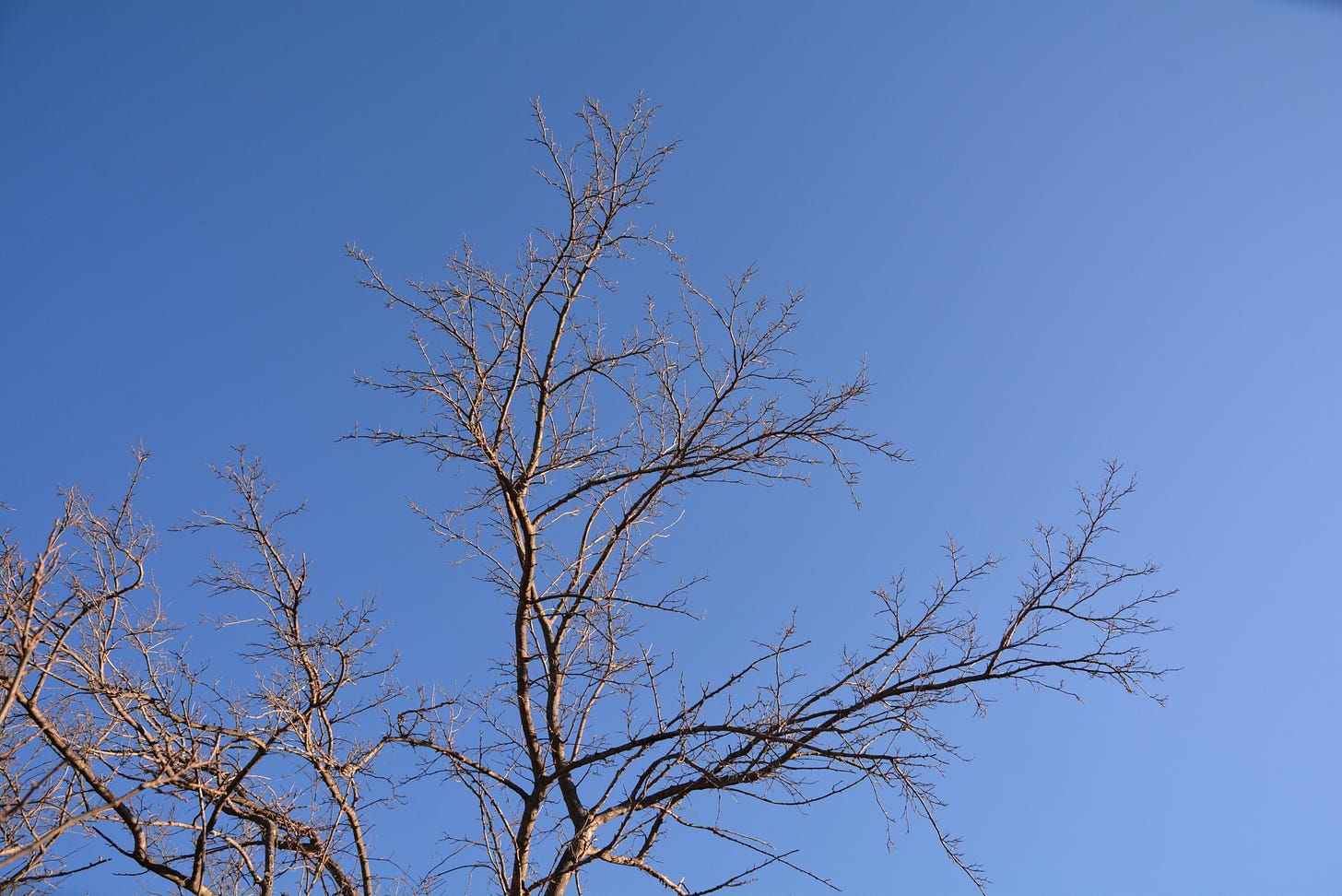Welcome new subscribers! These free essays are meant as a gift of hope and insight to heal your soul in these troubling times. Please share these with friends to help us grow. Learn more about supporting this work.
Dormant grasses brush my insulated jeans and boots as I head out to the first orchard. They range in shades of brown from soaked loam to dry hazelnut. A depressed patch of coffee-brown soil appears where a tractor tire spun out last Fall.
I stand at a high point in this river valley, facing northeast. Across the horizon, acres of copper-colored eight-foot-tall prairie grasses stand barely flattened from too little snow. Fields stitched together by farm roads and scrub trees shiver in a winter day’s slanted sunlight.
At the end of the first orchard, I stop and turn west toward jagged fruit tree branches mirroring each other, repeating off into eternity.
We’ve got a lot of work ahead of us, America, and not a lot of time.
Early Spring used to be a time of pleasant expectation. Emerging from a polar vortex, sliding on the overalls and heading outside has always been a brisk but hopeful experience.
Now I come at it with more kinds and sizes of blades than ever, to contain the damage while setting the stage for sweet, nutritious fruit. If we don’t get to work, and fast, we risk ending up with strange fruit in our lands once again.
Such is our life in these days of nascent fascism, and our orchard is where we need to be.
Pruning Lessons
First, we study each tree. It’s been at least three seasons since we’ve paid much attention to them. As the world warms up, cells are stirring after a long nap. The sap’s not flowing just yet, but these trees are very much alive.
Now is the time to focus. Now is the time to cut.
We start by pruning dead and diseased limbs. These are the easiest. They are beyond hope and beyond help. We can be ruthless.
The cut must be at least 6 inches below any blackened bark. Disease doesn’t like to make itself known while it’s still just getting a foothold. By the time you can see it on the bark, it has spread much farther through the layer hiding just below.
We must be vigilant with disease in our orchard. It is insidious. A silent killer. When you see snake oil passing for science, or fear passing for freedom, do not hesitate. Just lop it off.
A pruning saw or loppers offer leverage against a large limb. Such limbs have gained a life of their own, going off in an unhealthy direction. This cut takes a sharp edge, strength and tenacity, but is necessary for the future of this tree.
Snippers are for finer work, small branches and spurs caught before it’s too late. It’s key to nip false growth before it insinuates itself into our beautiful tree.
Why We Prune
We prune to shape a young tree. Small trees want to grow in every direction. The choices we make now – what to cut, what to keep – will create structure for the tree for decades to come. No angle should be too sharp. Seek balance.
We prune to bring an old tree back into production. Neglected for years, scraggly like a horror film character casting its long, wicked shadow, these trees can take years to reshape. Sometimes a tree gets away from us. What we do now can bring it back.
We prune to put energy into the roots, but don’t overdo it. We don’t want our tree to strangle itself. That speaks more to the planting of it, its very constitution you could say, which by now is well beyond our control.
We prune to strengthen immune systems. Our careful attention to our tree will allow it to grow healthy and strong. Leaving it to fend for itself can allow disease and damage to weaken it.
We prune because the tree doesn’t know what we want from it. Pruning is communicating with the tree. An untended tree will grow in all directions, some we don’t want, some that could eventually kill it…or even us.
Every prune feels like a death
Every cut is one less green bud, one less flower, one less piece of fruit in the fall. Still, leaving the tree to itself, the growth will be poor and the fruit small and sparse. Our tree will grow sick and die a slow death.
America, we’ve got ourselves a neglected, diseased tree. Get out the loppers.
It’s time to give our democracy the careful attention it demands.
A few of Iowa’s pruning tools
Install the 5 calls app or these numbers on your phone. Thank you fellow 82nd Indivisible member Jim Glasson for sharing.
Senator Charles Grassley
DC 202-224-3744
Davenport 563-322-4331
Senator Joni Ernst
DC 202-224-3254
Cedar Rapids 319-365-4504
Representative Mariannette Miller-Meeks
DC 202-225-6576
Davenport 563-232-0930
Current scenes from Draco Hill

Strange Fruit









I especially like that last pruning reason. It's definitely time to communicate with our trees - see if they can grow the fruits we want and need for all of our sakes.